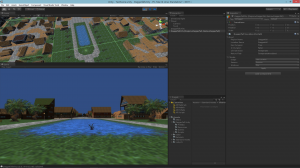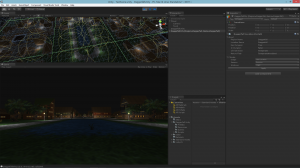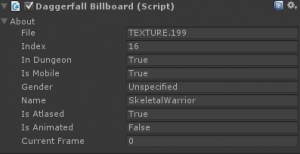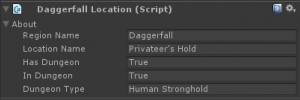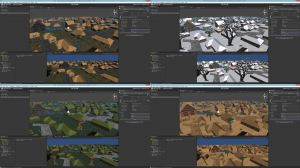I’ve been thinking about the release structure leading up to v1.0 of Daggerfall Tools for Unity. Up until now, I’ve been building new features right across the spectrum. I’ll be working on monsters one day, then lighting the next, then improving the editor, then working on action scripts in dungeons, and so on. Each of these pieces must be worked over a few times before I’m happy. However, I’d like to keep the releases coming and can’t let myself become too distracted. I need to step up a little.
I’ve decided there are certain groups of features that work well together, and I’d like to zoom in on these features based on where they fit. There will be a little crossover, as some features like basic monsters are already in.
Here is the release schedule for the next few weeks.
Release1 – This is already out. Has all the fundamentals of importing Daggerfall content into Unity.
Release2 – Includes lighting update, a player controller, enemies import, building interiors, dungeon texture swaps, new editor stuff, and a bunch of small bug fixes and other improvements. Basically everything I’ve been working on up until now. Release2 will be ready in about a week. I’m also working on a Unity Web Player demo to go along with it.
Release3 – Targets dungeons. I will build out action records (e.g. opening doors, clicking levers, moving platforms, etc.), another pass at enemies, improving navmesh support, etc. The goal is to make it possible to fully explore a dungeon. This release will be up in about 2-3 weeks, and will include another Unity Web Player demo.
Release4 – This will be version 1.0. I will concentrate on improving content browsing, fixing bugs, and tightening up code. The only new features will in the editor, everything else is just polish. This will be ready in approximately 4 weeks. No further demos are planned at this stage.
Release5 and Beyond – We now enter post-1.0 updates. What happens here will be determined by my available time and interest shown in the tools. These will typically be small maintenance releases to fix bugs and the like. I will also be chipping away on some more demos and extensions to show off what is possible with Daggerfall Tools for Unity. This will be stuff like simple AI behaviours, adding weapons, adding spells, and using the API. I am also hoping to create a few tutorials to help you get started.


